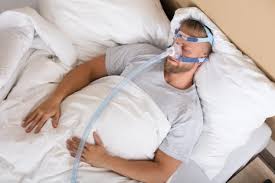No products in the cart.
Demystifying Sleep Apnea
The study of sleep is a fairly recent super-specialty in the field of medicine. Although scientists and doctors have been studying and treating sleep related disorders and issues since the advent of modern medicine, a specialty that dealt with sleep alone did not exist until recently. As our knowledge about sleep and its related comorbidities increased, we began to address the condition itself rather than treating the symptoms. In India, companies like Sanrai have been constantly providing information to sufferers and families about sleep apnea and the problems this seemingly harmless condition may lead to.
What is Sleep Apnea?
Sleep apnea is a sleep disorder in which breathing is interrupted repeatedly during sleep. Sleep apnea is classified according to the two different conditions that manifest in this disorder – Obstructive sleep apnea and Central sleep apnea. In Obstructive sleep apnea, the term apnea relates to the pause in breathing that occurs when the muscles in the back of the throat are unable to keep the airway open despite repeated efforts to breathe. In Central sleep apnea, the brain does not properly control breathing during sleep. Obstructive sleep apnea is the more common condition of the two. Although sleep apnea is well known and documented today, there are a lot of misconceptions and myths about this disorder that can affect how you approach this problem.

This five-point article will demystify common misconceptions about sleep apnea.
1. Snoring is the same as sleep apnea
Everyone who snores does not have sleep apnea. Although snoring and sleep apnea are closely related, snoring is just a sign that you may suffer from sleep apnea. Less than 30% of the people who snore may have sleep apnea. Snoring may actually be a sign of some other serious health conditions like heart failure, high blood pressure, obesity, and diabetes.
2. I sleep a lot, I cannot have sleep apnea!
Sleeping a lot will not cure sleep apnea. As sleep apnea does not let you reach the restorative phase of sleep, you wake up tense or tired regardless of the number of hours you sleep.
3. Sleep Apnea is a harmless condition
Although most people ignore snoring and sleep apnea as a harmless condition, it is important to know that if left untreated, sleep apnea can increase your risk for high blood pressure, heart disease, heart attack, stroke, and accidents.
4. I am skinny, therefore I cannot have sleep apnea
Sleep apnea can affect anyone, regardless of their age and weight. This condition can afflict children, men, and women of all age groups and all body weights. Obese individuals however, are at a higher risk to develop sleep apnea as compared to individuals who are fitter.
5. CPAP masks are ugly and make people look unattractive
Individuals wearing a CPAP mask will sleep better and wake up energized, making them look better than those left untreated. A person who has received a good night’s rest will always seem fitter than someone who is constantly tired due to the lack of sleep.
We hope that this five-point guide has demystified common myths about sleep apnea and how this potentially deadly condition can affect individuals of all ages. In India, Sanrai Med has been helping people get a good night’s sleep using the world-class CPAP solutions in their portfolio that help individuals lead healthier and happier lives.

